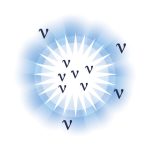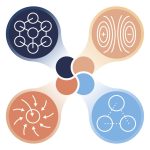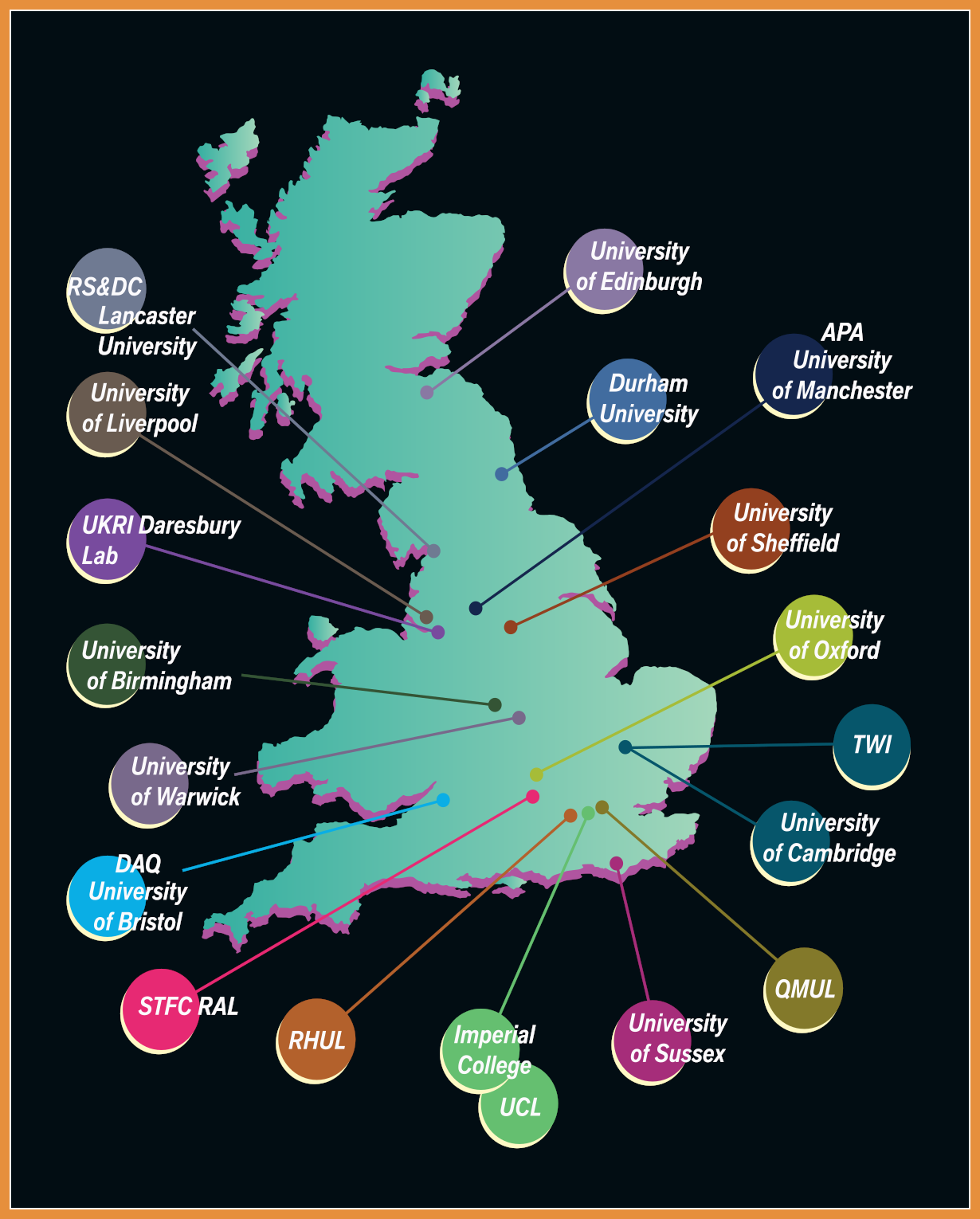What is DUNE?
DUNE, the Deep Underground Neutrino Experiment, is a cutting-edge experiment developed by the international neutrino physics community to study a broad range of science, including neutrino oscillations, neutrinos from nearby supernovae, and proton decays.
The Near Detector of the experiment will be hosted by Fermilab, IL, USA, with its Far Detector 1300 km away in South Dakota at the Sanford Underground Research Facility (SURF). Surprisingly, no tunnel is needed for the neutrinos to travel through because these ghostly particles pass easily through soil and rock as they rarely interact with matter. The Long-Baseline Neutrino Facility (LNBF) at Fermilab will deliver a neutrino beam of unprecedented power, which is needed for the detailed measurements DUNE is due to take of such elusive particles.
Probably the most well-known goal of the experiment is to study neutrino oscillations. This has driven the large-scale design of the experiment as neutrinos need to travel a large distance for oscillation to take place. This will help solve some fundamental questions, such as why the Universe is made of matter and not antimatter, and provide more information about the masses and nature of neutrinos.

An illustration to show how the DUNE setup will work
Why is DUNE important to Physics?
 Using Neutrinos to Study the Origin of Matter vs. Antimatter
Using Neutrinos to Study the Origin of Matter vs. Antimatter
DUNE hopes to determine whether neutrinos have matter-antimatter asymmetry (through investigating the nature of neutrino oscillations and testing charge-parity violation). This will help scientists understand why matter generation was so much greater than antimatter generation in the early universe.
 Searching for new Physics Phenomena such as Proton Decays
Searching for new Physics Phenomena such as Proton Decays
If rare subatomic interactions predicted by theoretical physicists are detected, DUNE could help scientists form a relationship between the stability of matter and the Grand Unification of forces – a theory pioneered by Albert Einstein who searched for a single grand unifying theory that would tie all of physics together.
 Observing a Supernova Event in our Galaxy
Observing a Supernova Event in our Galaxy
Neutrinos were generated in huge numbers just after the Big Bang and therefore hold the key to understanding the origin and following the evolution of the universe. DUNE will not only observe neutrinos created at Fermilab but will also monitor neutrinos emerging from exploding stars (supernovae) allowing us to peer inside and even potentially witness the creation of a black hole.
UK Involvement with DUNE
The DUNE experiment is an internationally designed, coordinated and funded program made up of over 1700 collaborators from over 200 institutions in over 30 countries, plus CERN, and is currently projected to cost more than $3 billion USD. The map below illustrates the far-reaching collaborative nature of this project within the UK.
Locations of the UK institutes collaborating on the DUNE experiment

The Science of the Deep Underground Neutrino Experiment (DUNE)
This 4-minute animation, created in 2017, shows how the international Deep Underground Neutrino Experiment will help scientists understand how the universe works.